Sarah L. Johnson's Blog, page 123
January 25, 2013
An early look at Rose Tremain's Merivel: A Man of His Time
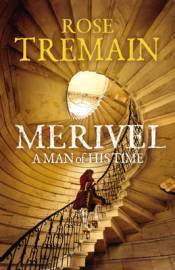 In this wonderful sequel to Restoration (1990), set 16 years later, Tremain’s lovingly flawed protagonist, Sir Robert Merivel, pens a second riveting memoir. He aspires to leave nothing out, and readers will be the grateful beneficiaries of his witty, observant reflections and self-deprecating honesty.
In this wonderful sequel to Restoration (1990), set 16 years later, Tremain’s lovingly flawed protagonist, Sir Robert Merivel, pens a second riveting memoir. He aspires to leave nothing out, and readers will be the grateful beneficiaries of his witty, observant reflections and self-deprecating honesty.By 1683, Merivel has ripened into late middle age, but neither his love for his beautiful daughter, Margaret, nor his comfortable existence at Norfolk’s Bidnold Manor relieves his melancholy. Wanting to be “dazzled by Wonders,” he travels to Versailles, hoping to become a court physician, but is let down by its glittering emptiness and his own sartorial foibles. His affair with an unhappily married Swiss noblewoman brings him happiness but comes with unexpected burdens.
Whether facing the illnesses of those closest to him, acting upon his lustful impulses, or pondering his responsibilities to his servants and king, Merivel finds that the compassionate and selfish aspects of his character are inextricably tangled. In a tone moving from contemplative and sad to uproariously funny and back again, Tremain masterfully captures the voice of a man searching for a satisfying and meaningful life as Charles II’s once-glorious reign winds down. It’s an absolute pleasure to spend time in Merivel’s company.
Rose Tremain's Merivel: A Man of His Time will be published by W.W. Norton on April 15th ($26.95, hb, 384pp), so you may have to wait a bit, but you can always get your preorders placed if you're so inclined. If you're in the UK or Canada, where it appeared from Chatto & Windus last September (£18.99, hb), you can pick it up now. I read it last month (the above is the starred review I wrote for Booklist's 2/1 issue), and I'm sure it will make my top 10 of 2013.
If you're at ALA Midwinter now, Library Journal's Galley & Signing Guide says that Merivel "will be given away at the booth during the Spotlight on Adult Literature, Saturday, 1/26, from 2:00 p.m. to 4:00 p.m." Norton is at booth 2409.
Published on January 25, 2013 14:41
January 19, 2013
A second gallery of Downton Abbey readalikes
Since I posted my last visual preview with a focus on historical novels that have been compared to Downton Abbey, I've come across many more. Below are 11 additional titles, mostly forthcoming, plus a couple of recent releases. These novels will incorporate a similar setting, timeframe, subject, or theme (or maybe all of them). Note how many have "house" titles!
I have four novels from the previous list on my to-review pile and will be getting to them as I'm able.
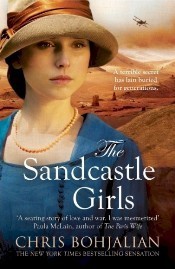
A July 2012 novel gets a classy new look (although I loved the original cover too) for its UK release. Billed as "Downton Abbey meets The English Patient," The Sandcastle Girls follows a young Mount Holyoke grad as she arrives in 1915 Syria to take up nursing duties and runs into evidence of an Armenian genocide. A present-day thread tells the story of her descendant. Simon & Schuster UK, hb last August, pb this March; also hb from Doubleday US (different cover).
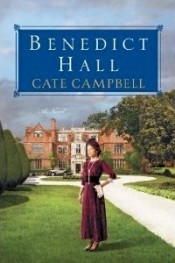
The story of a young woman physician living through a whirlwind of social changes as they hit 1920s Seattle, a new setting for a Downtonesque saga. A debut novel. Kensington, June 2013.

In this classic British saga, the wealthy Cavendish family of Rutherford Park has a centuries-old legacy of honor and tradition to uphold, but in the year 1913, the heir yearns to break free to live a life of his own, and long-held secrets are about to be revealed. Berkley, July 2013.
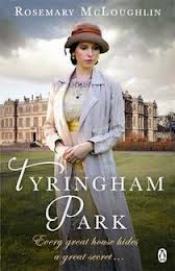
In 1917, when little Victoria Bradshaw vanishes from her family's grand country estate at Tyringham park, her older sister Charlotte sees painful secrets from their past brought front and center. This is the UK release of a novel published last October by Poolbeg, a small Irish press. "Period glamour and darkness," says the blurb. Penguin UK, February 2013.
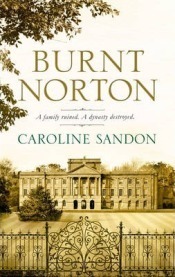
We're heading back to the 18th century with Caroline Sandon's debut novel, set in Burnt Norton in rural Gloucestershire (where the author also lives). In 1731, Sir William Keyt will stop at nothing to protect his family's social standing, even if it means destroying his surviving son's chance at love and happiness. "A powerful story, beautifully told, of greed and love and betrayal and waste," says Julian Fellowes. Head of Zeus (UK), June 2013.
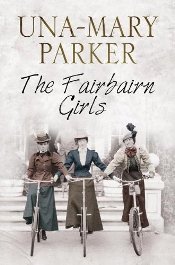
In 1891, the aristocratic Fairbairn family of Lochlee Castle in Argyllshire, Scotland, struggles to free themselves from a terrible curse. The author has written many sagas set around the turn of the 20th century. Severn House, February 2013.
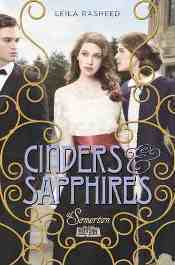
I came across Cinders and Sapphires via a NetGalley promotion. This first in the "At Somerton" series for YAs tells of a friendship between a titled young woman, Ada Averley of Somerton, and her new housemaid... and of a larger scandal that threatens to envelop the Averley family. A nice review from Kirkus, which called it "a thoroughly satisfying romp for Downton Abbey fans." Hyperion, January 2013.
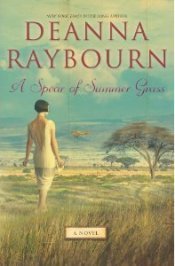
Deanna Raybourn's upcoming novel is one that we'd discussed in the comments of my last Downton post, and I've already preordered it. In 1923, following a major scandal, flapper Delilah Drummond is sent away to Fairlight, her stepfather's savannah manor house in Kenya. Africa is becoming a more prevalent setting for historicals; is this a new trend in itself? MIRA, May 2013.

In 1904, Ravenscliffe of the title is a neglected Victorian manor in a Yorkshire mining village which becomes the new home of a Russian émigré, her good friend, and their families, but their contentment is not to last. This is the sequel to Netherwood though it's been written to stand alone. Sphere, September 2012.
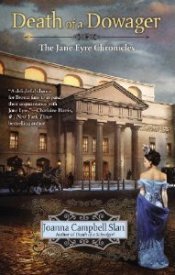
Second in the Jane Eyre Chronicles, a series which imagines the well-known former governess as sleuth. In the 1820s, while their rural home is being renovated, Jane and her husband Edward Rochester relocate to London, where they get caught up in the social scene and Jane investigates the death of a snooty matron. Berkley, April 2013.
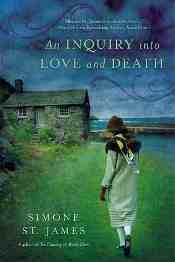
An atmospheric mystery with ghosts set in a seaside village in 1920s England, as Oxford student Jillian Leigh investigates who killed her uncle. I'll be conducting an interview with the author for Historical Novels Review and am looking forward to reading this one. NAL, March 2013.
I have four novels from the previous list on my to-review pile and will be getting to them as I'm able.

A July 2012 novel gets a classy new look (although I loved the original cover too) for its UK release. Billed as "Downton Abbey meets The English Patient," The Sandcastle Girls follows a young Mount Holyoke grad as she arrives in 1915 Syria to take up nursing duties and runs into evidence of an Armenian genocide. A present-day thread tells the story of her descendant. Simon & Schuster UK, hb last August, pb this March; also hb from Doubleday US (different cover).

The story of a young woman physician living through a whirlwind of social changes as they hit 1920s Seattle, a new setting for a Downtonesque saga. A debut novel. Kensington, June 2013.

In this classic British saga, the wealthy Cavendish family of Rutherford Park has a centuries-old legacy of honor and tradition to uphold, but in the year 1913, the heir yearns to break free to live a life of his own, and long-held secrets are about to be revealed. Berkley, July 2013.

In 1917, when little Victoria Bradshaw vanishes from her family's grand country estate at Tyringham park, her older sister Charlotte sees painful secrets from their past brought front and center. This is the UK release of a novel published last October by Poolbeg, a small Irish press. "Period glamour and darkness," says the blurb. Penguin UK, February 2013.

We're heading back to the 18th century with Caroline Sandon's debut novel, set in Burnt Norton in rural Gloucestershire (where the author also lives). In 1731, Sir William Keyt will stop at nothing to protect his family's social standing, even if it means destroying his surviving son's chance at love and happiness. "A powerful story, beautifully told, of greed and love and betrayal and waste," says Julian Fellowes. Head of Zeus (UK), June 2013.

In 1891, the aristocratic Fairbairn family of Lochlee Castle in Argyllshire, Scotland, struggles to free themselves from a terrible curse. The author has written many sagas set around the turn of the 20th century. Severn House, February 2013.

I came across Cinders and Sapphires via a NetGalley promotion. This first in the "At Somerton" series for YAs tells of a friendship between a titled young woman, Ada Averley of Somerton, and her new housemaid... and of a larger scandal that threatens to envelop the Averley family. A nice review from Kirkus, which called it "a thoroughly satisfying romp for Downton Abbey fans." Hyperion, January 2013.

Deanna Raybourn's upcoming novel is one that we'd discussed in the comments of my last Downton post, and I've already preordered it. In 1923, following a major scandal, flapper Delilah Drummond is sent away to Fairlight, her stepfather's savannah manor house in Kenya. Africa is becoming a more prevalent setting for historicals; is this a new trend in itself? MIRA, May 2013.

In 1904, Ravenscliffe of the title is a neglected Victorian manor in a Yorkshire mining village which becomes the new home of a Russian émigré, her good friend, and their families, but their contentment is not to last. This is the sequel to Netherwood though it's been written to stand alone. Sphere, September 2012.

Second in the Jane Eyre Chronicles, a series which imagines the well-known former governess as sleuth. In the 1820s, while their rural home is being renovated, Jane and her husband Edward Rochester relocate to London, where they get caught up in the social scene and Jane investigates the death of a snooty matron. Berkley, April 2013.

An atmospheric mystery with ghosts set in a seaside village in 1920s England, as Oxford student Jillian Leigh investigates who killed her uncle. I'll be conducting an interview with the author for Historical Novels Review and am looking forward to reading this one. NAL, March 2013.
Published on January 19, 2013 09:00
Winners of Ann Chamberlin's The Sword of God
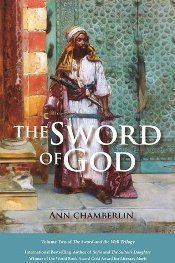 Thanks to everyone who entered the giveaway for Ann Chamberlin's The Sword of God, following her guest post on January 10th. I've drawn the winning entries with the help of Random.org and am pleased to announce that the three copies will be going to:
Thanks to everyone who entered the giveaway for Ann Chamberlin's The Sword of God, following her guest post on January 10th. I've drawn the winning entries with the help of Random.org and am pleased to announce that the three copies will be going to:Carol, Beth, and Kim
I'll drop you a line to obtain your mailing addresses. Hope you'll enjoy the read!
Thanks also to Ann for her generosity in providing three copies for the giveaway.
Published on January 19, 2013 05:50
January 16, 2013
A look at Theresa Tomlinson's mystery of Anglo-Saxon Whitby, A Swarming of Bees
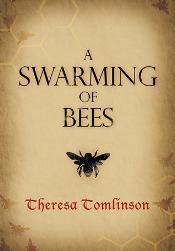 Theresa Tomlinson's A Swarming of Bees is her first adult novel, a smooth historical mystery set in Anglo-Saxon times. Her previous books have been geared toward children or YAs.
Theresa Tomlinson's A Swarming of Bees is her first adult novel, a smooth historical mystery set in Anglo-Saxon times. Her previous books have been geared toward children or YAs.This was a recent purchase. I'm not sure where I first came across it... maybe on Goodreads, maybe on a blog. You don't see too much fiction set in England centuries before the Conquest, unless it's about the Romans or King Arthur (or written by Bernard Cornwell), but novels of early medieval times have always appealed to me. I wish there more of them.
Fridgyth is an herb-wife at the double monastery at Streonshalh in Northumbria in 664 AD, a year that anyone familiar with the period will recognize. While Fridgyth tends to her duties outdoors, a large religious debate is in progress inside. Kings, queens, bishops, and other church leaders from far and wide have gathered to decide on a controversial issue that will have far-reaching impact: whether to follow Roman or Celtic practice in calculating the date for Easter and the style for monks' tonsures.
The Synod of Whitby, as it would later be known, involved complex and lengthy liturgical arguments, but Tomlinson makes them understandable for the reader. She provides good examples of each party's concerns and lays the royal families' genealogical relationships out cleanly, too.
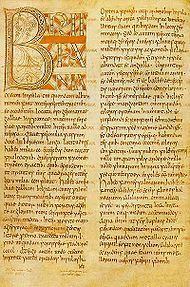
As her quiet community reels at the shock of King Oswy's ruling — he decides in favor of Rome — Abbess Hild confides her despair to her good friend Fridgyth while keeping her guests entertained and well fed. Two young Irish scholars arrive in the midst of this troubled atmosphere, and at least one of them is other than he seems. Then a virulent strain of plague hits Streonshalh, which makes it hard for Fridgyth to notice at first that some of the deaths had a more sinister cause. Once she does, her investigation begins in earnest.
Despite the spread of Christianity, pockets of pagan belief still linger in 7th-century Northumbria, especially amongst the common people. Fridgyth herself is half-pagan, and she has the amusing habit of exclaiming "Blessed Freya!" at unguarded moments. She also defends her non-Christian friends' wishes to burn their dead and their belongings... she even urges it, saying that fire will kill off the plague. Even while serving as leader of her religious flock, Hild practices tolerance as well.
Tomlinson gradually weaves Fridgyth's personal history into the storyline. She's no longer young — like Abbess Hild, she's in her fifties — but her present circumstances call to mind her lost family, and the possible rekindling of a lost love.
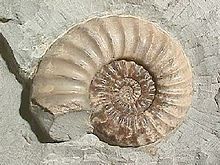 Although Fridgyth is a fictional character, much of the novel's historical background can be found in Bede, including the presence of a cowherd named Caedmon with a gift for lyric poetry. (His imagined verses are included, and they're very good.) The seaside setting of Streonshalh is easy to picture, from the monks' heather-thatched huts to the area's rocky cliffs and the curious snakestones found beneath them.
Although Fridgyth is a fictional character, much of the novel's historical background can be found in Bede, including the presence of a cowherd named Caedmon with a gift for lyric poetry. (His imagined verses are included, and they're very good.) The seaside setting of Streonshalh is easy to picture, from the monks' heather-thatched huts to the area's rocky cliffs and the curious snakestones found beneath them.In this realistic yet gentle mystery, the harsher aspects of life are treated accurately without being presented in burdensome detail. The version I read has some typos and misplaced punctuation, and one section of repeated text, but was otherwise well edited. A novel of strong women, warm friendship, and political intrigue set at a turning point in English history, A Swarming of Bees may be written for an adult audience, but YAs should enjoy it too.
A Swarming of Bees was self-published through Acorn Independent Press in December 2012 at £7.99 (pb, 290pp). American readers can buy it on Kindle at $4.99 (it's worth it). The latter two pictures are public domain images from Wikipedia.
Published on January 16, 2013 15:00
January 14, 2013
Book review: The Prisoner of Paradise, by Romesh Gunesekera
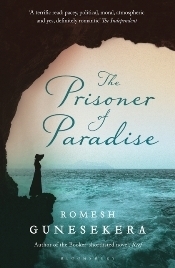 With a tone alternately playful, poetic, and serious, Booker nominee Gunesekera provides welcome insight into the culture of Mauritius, a tropical isle off Africa’s coast, at a pivotal time. It’s 1825, some 15 years after Britain wrested control of it from the French. The Rosetta Stone has opened up a world of linguistic discoveries, and William Wilberforce’s abolitionist crusade has borne fruit in his homeland – and spread to its far-flung colonies.
With a tone alternately playful, poetic, and serious, Booker nominee Gunesekera provides welcome insight into the culture of Mauritius, a tropical isle off Africa’s coast, at a pivotal time. It’s 1825, some 15 years after Britain wrested control of it from the French. The Rosetta Stone has opened up a world of linguistic discoveries, and William Wilberforce’s abolitionist crusade has borne fruit in his homeland – and spread to its far-flung colonies. Mauritius is the adopted home for diverse ethnicities: the ruling English, French settlers, plus Ceylonese, Indians, and Africans, including slaves and convicts. Into this combustible atmosphere comes orphaned Lucy Gladwell, who arrives from England to stay with her Aunt Betty, a smart, gracious woman whose open-mindedness vies with tradition, and her Uncle George, a racist official, at their plantation house.
Lucy’s path crosses that of Don Lambodar, the Ceylonese interpreter for an exiled prince, when he delivers a letter to her uncle. An Indian slave wants to establish a “Hindoo” shrine and persuades Don to negotiate on his behalf – a risky move on Don’s part. Idealistic, bookish Lucy attracts, repels, and befuddles Don in turn. Their mutual search for freedom has great potential for a grand romance, but the simmering political tensions keep it in the background until late in the book.
The island’s majestic beauty captures all of the senses, with descriptions of the wide sky and ocean, the sweet scent of ripe pineapples, and the cries of native birds. Its colorful flora is both lushly abundant and mischievously symbolic, with Lucy and Don’s first meaningful conversation taking place in a garden full of plants shaped like male and female body parts. The author’s dialogue is witty and expressive, and the plot addresses colonialism’s realities while commemorating the power of the written word. The book’s clever title is left open-ended, with all of the women restricted by their gender, and everyone on the island subject to its “aristocracy of skin.”
The Prisoner of Paradise is published by Bloomsbury (UK) this February at £8.99 (pb, 400pp). It also comes as a larger-format paperback, published by Bloomsbury last February at £11.99, which is the copy I bought and read.
Published on January 14, 2013 19:15
January 12, 2013
Winner of the 2012 Langum Prize in American Historical Fiction
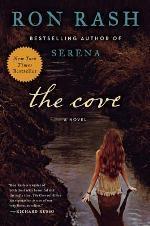 Ron Rash's The Cove (NY: Ecco, 2012) has been announced as the winner of the 2012 Langum Prize in American Historical Fiction.
Ron Rash's The Cove (NY: Ecco, 2012) has been announced as the winner of the 2012 Langum Prize in American Historical Fiction.From the press release: "This powerful and atmospheric novel takes place in the North Carolina mountains during the final year of World War I. The story revolves around a sister and brother, Laurel and Hank, whose family home in an isolated cove is darkened by cliffs, ridges, and local superstitions.
"The Cove is American historical fiction at its best. The writing is lyrical and the novel is rich with symbolism, yet the prose does not overshadow the story. Rash’s use of regional language adds depth to the characters and never strays toward ridicule... With a light touch, Rash balances anti-German sentiment and America’s increasing impatience with the war."
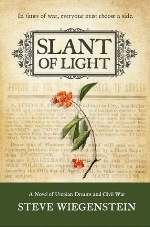 Steve Wiegenstein's Slant of Light (St. Louis, MO: Blank Slate Press, 2012) received an Honorable Mention.
Steve Wiegenstein's Slant of Light (St. Louis, MO: Blank Slate Press, 2012) received an Honorable Mention.From the press release: "This well-written debut novel describes the travails of a utopian colony in southern Missouri during the late 1850s. At a deeper level it is also a meditation on the decline of order – social order, sexual order, and political order – all clearly delineated but with no causal explanation other than 'homo homini lupus.' Man is a wolf to man, and probably an ample reason ... Congratulations are due to Wiegenstein for this lovely book on a neglected border state and also are due to the new small press that published it."
[Read my review of Slant of Light here.]
The prize shortlist for 2012 comprised the following five historical novels:
The Cove, by Ron Rash (Ecco)
A Good Man, by Guy Vanderhaeghe (Atlantic Monthly)
San Miguel, by T.C. Boyle (Viking)
Slant of Light, by Steve Wiegenstein (Blank Slate)
True Sisters, by Sandra Dallas (St. Martin’s)
For more on the prize see the Langum Charitable Trust. To submit a novel for consideration, view the directions available at the site. The prize is awarded annually to the "best book in American historical fiction that is both excellent fiction and excellent history." Past years' winners include Julie Otsuka's The Buddha in the Attic, Ann Weisgarber's The Personal History of Rachel DuPree, Edward Rutherfurd's New York, and Kathleen Kent's The Heretic's Daughter.
Published on January 12, 2013 06:55
January 10, 2013
Researching the Historical Novel: A Personal Experience of the Slush Pile, a guest post by Ann Chamberlin
Today I'm welcoming internationally bestselling author Ann Chamberlin back to the blog with a powerful guest post about the inspiration for her new novel, The Sword of God, set in 7th-century Arabia and dealing with the early years of Islam. We have a giveaway opportunity at the end, too (open internationally).
~
Researching the Historical Novel:
A Personal Experience of the Slush PileAnn Chamberlin
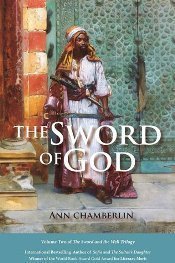
My latest book, The Sword of God, is the second volume of a trilogy about early Islam. I'm just sending the third volume, The Sword and the Well, to the editors now, and it should be out later in 2013.
Sarah gave me a great interview for The Woman at the Well, the first volume, some time ago, for which I thank her. I thank her for this chance to blog, too.
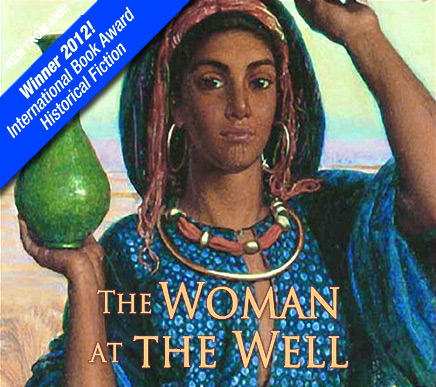
In that earlier interview, I told the story of the genesis of this work, about the Bedouin woman I had the fortune to meet in the Sinai desert and how knowing her plunged me into a life of struggling for understanding in the best way I know how—through writing and reading historical fiction.
I'd like to share more details of that formative trip that also went into this series of novels. I was a college student majoring in archaeology in those long-ago days, when I got the chance to excavate at the biblical site of Tel Be'er Sheva in the Negev Desert.

That experience confirmed me in the interest of my life, provided a lot of detail for my novel Snakesleeper (originally titled Tamar) about King David's daughter.
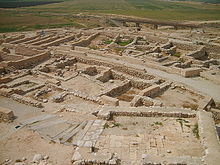
Here's a picture of Tel Be'er Sheva.
The excavation also became a very concrete example for me of winners writing history. I scraped away for three months with my "turiot" — I think the word we used for this tool is the Hebrew. Kibbutzniks used turiots to lay in their irrigation systems. They were like hoes, not the trowels or toothbrushes you may see excavators using on television.
We grunts were moving lots of dirt with our turiots, but not nearly as much as the bulldozer over on the other side of the tel. I sometimes stood and watched him, trying to make what I saw over there agree somehow with the "carefully save everything," "every remain has its story" of my archaeology classwork. The bulldozer was removing the top layers — NB all the Muslim layers: an Ottoman police station, a few Arab graves. He was preparing the surface for the first cuts of our more careful blades.
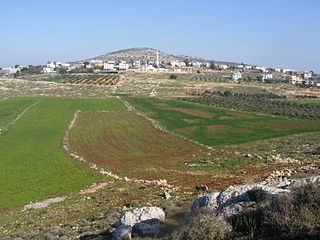
In the fields below him, Bedouins — men, women and children — kept their heads down over their melon fields. For one moment, the blade of the bulldozer exposed the double bones of a human lower arm. A bracelet of silver, green and blue beads encircled the limb. I had no more time than to think, "That's the grandmother of somebody working down in that field," before the sight vanished under another swath of yellow, bulldozed dirt. The sight vanished from the world, but never from my memory.
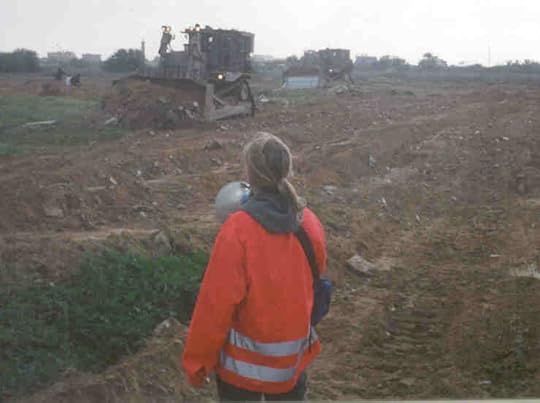
I am sorry to say, I didn't stand in front of that bulldozer like twenty-three-year old American Rachel Corrie, whom the Palestinians call a martyr, did in front of hers. But of course, she had the higher purpose of trying to save the homes of living Palestinians from destruction by the Israeli Defense Forces. I kept as silent as the Bedouin woman in her disturbed grave.
And in those far-off, innocent days, I still mostly believed the spin of the more experienced excavators around me. That summer, we at Tel Sheva had a visit from Dame Kathleen Kenyon, the famous excavator of Jerusalem and Jericho with whose books I was already familiar, something of a hero of mine.
I'd stood at attention with the rest, turiots on our shoulders, while afar the bosses showed the grande dame around, leaning on her cane. Some of my fellow diggers, the livelier young Zionist men, had fashioned bow ties for themselves from cardboard, so there they were, in steel-toed desert boots, cut-offs, sabra hats, bare, brown hairy chests (nobody worried about melanoma in those days) — and cardboard bow ties. I wish I had a picture of that! Think scruffy Chippendales in a revue line along a dusty balk with turiots for canes.
All I have is this:
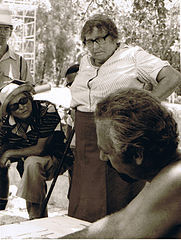
To my total incomprehension, my coworkers were making fun of her.
You can see Dame Kenyon was a stout woman, God rest her, a British battleax. "She'll bring down my carefully honed balk," grumbled the fellow next to me, running a finger around the sweat under his tie.
"Bad methodology," said another, when pressed.
Even shallow judgements made by people who ought to know to dig below any surface paled in comparison to Dame Kenyon's graver sins, in their eyes, of "bad methodology," of having dug below the line where King David crawled up a water tunnel and conquered the ancient "City of David." She revealed Jericho millennia before Joshua fit the battle.
Look again at the picture of our tel, its streets and low walls hermetically sealed for the tourists at the level of Kingdom of Israel occupation. Nothing saved below. Nothing after.
What my turiot whacked through actually tells a very different story.
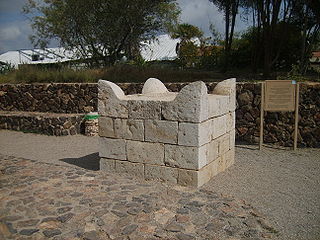
We found the original of this altar purposely hacked to bits, desecrated and strewn around the site. In trench after trench at the highest point of the tel, we dug down to bedrock searching for traces of an ancient sanctuary. It should be there. It was there, every place else in the Middle East. Guess what? Somebody in the eighth century BC had erased every trace of what was before, sown salt on it in fact. They made sure nobody would revere the site again. I found an arrowhead and burned wooden beams, showing just how the deed was done. We were looking Amos v:5 and VIII:14 in the face: "They that swear by the sin of Samaria and say, Thy god, O Dan, liveth; and the manner of Beersheba liveth; even they shall fall, and never rise up again." The priests of the City of David ordered all other sanctuaries in the land destroyed so they and their God alone could receive all the worship — and all the taxes shipped to them in jugs labeled KDŠ — "holy". I found one of those, too, at a higher level.
This is why there's only a volume one of the Beer Sheva excavation reports. That's why we were even ordered to give up digging the famous well where Abraham made a covenant to own the land — the covenant of the tel's name, something like $24 in beads for Manhattan.

Digging in the well did send a number of our party to the hospital with mysterious infections. That is the reason they gave for stopping the digging there. And our director, Professor Yohanan Aharoni, died shortly thereafter. Of a broken heart, my dramatic mind likes to think. Because he couldn't tell the story his efforts — and mine — had found.

If you'd like to take consolation by thinking this is an isolated incident in the annals of archaeology, think again. "The Making of Israel Based on Lies: The Masada Fraud" is but one article exposing that the great icon of Israeli nationalism, where IDF Special Forces are sworn in in secret rites — Masada, too, is the result of revisionist science.
I know what this is like. I live in Utah, and we have the site of the Mountain Meadows massacre. After the first children's skulls with bullet holes appeared, we shut that excavation down quickly, too.
It's taken me many years to come to an understanding of what I saw on that dig with my own eyes. I could do nothing then but wield my turiot and think under the hot sun. I understand now that scientific publications are often as not fiction. My fiction, I like to think, is truer. And the only way, really, to get the truth of what I saw onto the page. Through my fiction, I give voice to the child's olive eyes I saw looking out through the chainlink of a refugee camp at me and my girlfriends sauntering down to the beach in Gaza. To the Ottoman police station I saw go under the bulldozer — my Sofia series deals with that.

And my most recent work gives voice to my veiled and silent but powerful woman of the Sinai. To those arm bones and their silver and blue and green bracelet buried on the tel of Be'er Sheva. These things are worth the time for me to write about, not to dismiss as merely the slush pile of history.
Ann Chamberlin
author of The Woman at the Well (2011)
and The Sword of God (2012)
annchamberlin.com
~
Ann Chamberlin's The Sword of God was published in 2012 by Epigraph (256pp, $14.95 trade paperback or $24.00 hardcover). Photographs above are from Wikimedia Commons.
Thanks to the generosity of the author, we have three copies of The Sword of God up for grabs. Fill out the form below for a chance to win. Deadline: Friday, January 18, 2013.
~
Researching the Historical Novel:
A Personal Experience of the Slush PileAnn Chamberlin

My latest book, The Sword of God, is the second volume of a trilogy about early Islam. I'm just sending the third volume, The Sword and the Well, to the editors now, and it should be out later in 2013.
Sarah gave me a great interview for The Woman at the Well, the first volume, some time ago, for which I thank her. I thank her for this chance to blog, too.

In that earlier interview, I told the story of the genesis of this work, about the Bedouin woman I had the fortune to meet in the Sinai desert and how knowing her plunged me into a life of struggling for understanding in the best way I know how—through writing and reading historical fiction.
I'd like to share more details of that formative trip that also went into this series of novels. I was a college student majoring in archaeology in those long-ago days, when I got the chance to excavate at the biblical site of Tel Be'er Sheva in the Negev Desert.

That experience confirmed me in the interest of my life, provided a lot of detail for my novel Snakesleeper (originally titled Tamar) about King David's daughter.

Here's a picture of Tel Be'er Sheva.
The excavation also became a very concrete example for me of winners writing history. I scraped away for three months with my "turiot" — I think the word we used for this tool is the Hebrew. Kibbutzniks used turiots to lay in their irrigation systems. They were like hoes, not the trowels or toothbrushes you may see excavators using on television.
We grunts were moving lots of dirt with our turiots, but not nearly as much as the bulldozer over on the other side of the tel. I sometimes stood and watched him, trying to make what I saw over there agree somehow with the "carefully save everything," "every remain has its story" of my archaeology classwork. The bulldozer was removing the top layers — NB all the Muslim layers: an Ottoman police station, a few Arab graves. He was preparing the surface for the first cuts of our more careful blades.

In the fields below him, Bedouins — men, women and children — kept their heads down over their melon fields. For one moment, the blade of the bulldozer exposed the double bones of a human lower arm. A bracelet of silver, green and blue beads encircled the limb. I had no more time than to think, "That's the grandmother of somebody working down in that field," before the sight vanished under another swath of yellow, bulldozed dirt. The sight vanished from the world, but never from my memory.

I am sorry to say, I didn't stand in front of that bulldozer like twenty-three-year old American Rachel Corrie, whom the Palestinians call a martyr, did in front of hers. But of course, she had the higher purpose of trying to save the homes of living Palestinians from destruction by the Israeli Defense Forces. I kept as silent as the Bedouin woman in her disturbed grave.
And in those far-off, innocent days, I still mostly believed the spin of the more experienced excavators around me. That summer, we at Tel Sheva had a visit from Dame Kathleen Kenyon, the famous excavator of Jerusalem and Jericho with whose books I was already familiar, something of a hero of mine.
I'd stood at attention with the rest, turiots on our shoulders, while afar the bosses showed the grande dame around, leaning on her cane. Some of my fellow diggers, the livelier young Zionist men, had fashioned bow ties for themselves from cardboard, so there they were, in steel-toed desert boots, cut-offs, sabra hats, bare, brown hairy chests (nobody worried about melanoma in those days) — and cardboard bow ties. I wish I had a picture of that! Think scruffy Chippendales in a revue line along a dusty balk with turiots for canes.
All I have is this:

To my total incomprehension, my coworkers were making fun of her.
You can see Dame Kenyon was a stout woman, God rest her, a British battleax. "She'll bring down my carefully honed balk," grumbled the fellow next to me, running a finger around the sweat under his tie.
"Bad methodology," said another, when pressed.
Even shallow judgements made by people who ought to know to dig below any surface paled in comparison to Dame Kenyon's graver sins, in their eyes, of "bad methodology," of having dug below the line where King David crawled up a water tunnel and conquered the ancient "City of David." She revealed Jericho millennia before Joshua fit the battle.
Look again at the picture of our tel, its streets and low walls hermetically sealed for the tourists at the level of Kingdom of Israel occupation. Nothing saved below. Nothing after.
What my turiot whacked through actually tells a very different story.

We found the original of this altar purposely hacked to bits, desecrated and strewn around the site. In trench after trench at the highest point of the tel, we dug down to bedrock searching for traces of an ancient sanctuary. It should be there. It was there, every place else in the Middle East. Guess what? Somebody in the eighth century BC had erased every trace of what was before, sown salt on it in fact. They made sure nobody would revere the site again. I found an arrowhead and burned wooden beams, showing just how the deed was done. We were looking Amos v:5 and VIII:14 in the face: "They that swear by the sin of Samaria and say, Thy god, O Dan, liveth; and the manner of Beersheba liveth; even they shall fall, and never rise up again." The priests of the City of David ordered all other sanctuaries in the land destroyed so they and their God alone could receive all the worship — and all the taxes shipped to them in jugs labeled KDŠ — "holy". I found one of those, too, at a higher level.
This is why there's only a volume one of the Beer Sheva excavation reports. That's why we were even ordered to give up digging the famous well where Abraham made a covenant to own the land — the covenant of the tel's name, something like $24 in beads for Manhattan.

Digging in the well did send a number of our party to the hospital with mysterious infections. That is the reason they gave for stopping the digging there. And our director, Professor Yohanan Aharoni, died shortly thereafter. Of a broken heart, my dramatic mind likes to think. Because he couldn't tell the story his efforts — and mine — had found.

If you'd like to take consolation by thinking this is an isolated incident in the annals of archaeology, think again. "The Making of Israel Based on Lies: The Masada Fraud" is but one article exposing that the great icon of Israeli nationalism, where IDF Special Forces are sworn in in secret rites — Masada, too, is the result of revisionist science.
I know what this is like. I live in Utah, and we have the site of the Mountain Meadows massacre. After the first children's skulls with bullet holes appeared, we shut that excavation down quickly, too.
It's taken me many years to come to an understanding of what I saw on that dig with my own eyes. I could do nothing then but wield my turiot and think under the hot sun. I understand now that scientific publications are often as not fiction. My fiction, I like to think, is truer. And the only way, really, to get the truth of what I saw onto the page. Through my fiction, I give voice to the child's olive eyes I saw looking out through the chainlink of a refugee camp at me and my girlfriends sauntering down to the beach in Gaza. To the Ottoman police station I saw go under the bulldozer — my Sofia series deals with that.

And my most recent work gives voice to my veiled and silent but powerful woman of the Sinai. To those arm bones and their silver and blue and green bracelet buried on the tel of Be'er Sheva. These things are worth the time for me to write about, not to dismiss as merely the slush pile of history.
Ann Chamberlin
author of The Woman at the Well (2011)
and The Sword of God (2012)
annchamberlin.com
~
Ann Chamberlin's The Sword of God was published in 2012 by Epigraph (256pp, $14.95 trade paperback or $24.00 hardcover). Photographs above are from Wikimedia Commons.
Thanks to the generosity of the author, we have three copies of The Sword of God up for grabs. Fill out the form below for a chance to win. Deadline: Friday, January 18, 2013.
Published on January 10, 2013 07:00
January 7, 2013
For the TBR Pile Challenge: Tracy Chevalier, The Lady and the Unicorn
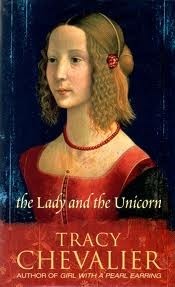 Entry in the 2013 TBR Pile Challenge: #1 out of 12
Entry in the 2013 TBR Pile Challenge: #1 out of 12Years on TBR: 9
Edition owned: HarperCollins UK, 2003 (hb, 279pp).
Now you'll know why I picked Tracy Chevalier's The Lady and the Unicorn as one of my choices for the TBR Challenge. It's been sitting on my shelves for over nine years - which is unconscionable! My copy is a first edition UK hardcover, too, which makes a strong argument in favor of physical books. It's simply stunning, from the cover painting to the endpapers and back jacket, which reproduce five of the six Lady and the Unicorn tapestries now housed in the Musée de Cluny. I had the opportunity to view them in the mid-1980s, when I traveled to Paris with my high school French class, and went back to view them during a term abroad in college.
The novel imagines the circumstances surrounding the tapestries' creation, from the original, groundbreaking design for the "cartoons" (the paintings used as their blueprints) through their weaving at a Brussels studio and their return and display in the Grand Salle of the Parisian home of Jean Le Viste, who commissioned them. The book's focus is as much on the individuals involved in the process and whose lives were affected by them, though. The tapestries were a collaborative effort, and the book's structure reflects and emphasizes this; the viewpoint switches back and forth among seven people.
In Paris in 1490, wealthy nobleman Jean Le Viste, eager to impress his king and enhance his status, wants to commission tapestries depicting the Battle of Nancy. Upon hearing this, Nicolas des Innocents gets slightly panicked, since he doubts his ability to do his patron's ideas justice. His talent is in painting miniatures of court ladies, not large horses and bloody battle scenes.
Fortunately, he finds a way (following subtle suggestions from the women of the house) of persuading Le Viste toward a more appropriate subject. And so the concept of the "lady and the unicorn" tapestries goes forward. Georges de la Chapelle, over in Brussels, is selected as the weaver. My favorite aspect of the novel was how it brought me into his busy workshop, observing the long, intricate, painstaking process by which the pieces were woven and noting the symbolism that went into each of the six designs.
Nicolas is a cheeky, arrogant young man who enjoys seducing women as much as painting them, but Le Viste's wife, Geneviève de Nanterre, presciently sees his ability to capture women's spiritual nature in his work. Despite his bad reputation, both Claude Le Viste, her eldest daughter, and Aliénor de la Chapelle, the blind daughter of the family of Flemish weavers, find him irresistible. Nicolas is trouble, and it's fun to see his antics in action. Like the unicorn in his designs, he finds himself caught in the ladies' web. Other reviewers have called this novel romantic, but I'd only call it such in the sense of courtly love, with its yearning for the unattainable.
Tracy Chevalier's clear prose doesn't call attention to itself. There's nothing flashy about her writing; rather, it burns with a warm, steady glow that illuminates the era and her characters. And as with the "millefleurs" carefully selected by Aliénor from her garden to include in the tapestries' backgrounds, this novel is full of important tidbits on topics such as late medieval artisanship, women's restrictive lives, and the intersections between them (women weren't allowed to do any actual weaving, lest their husbands and fathers lose their guild membership). Although I didn't find the underlying storyline especially unique, these little details make the novel shine.
Published on January 07, 2013 15:55
January 4, 2013
Book review: Seven Locks, by Christine Wade
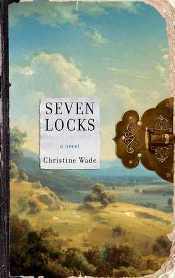 Once there was a classic American folk tale about a good-natured but indolent Dutch farmer who settled in the Catskills just before the Revolutionary War. Irked by his laziness, his shrewish wife drove him from their home. Taking along his loyal dog, he fled high into the mountain wilderness – never to be seen by her again.
Once there was a classic American folk tale about a good-natured but indolent Dutch farmer who settled in the Catskills just before the Revolutionary War. Irked by his laziness, his shrewish wife drove him from their home. Taking along his loyal dog, he fled high into the mountain wilderness – never to be seen by her again. You may know his name and the odd, mysterious things that happened to him there, but even if you have, you won’t have heard it all. There are multiple angles to every story, and this one belongs to the ladies. In her debut novel, Christine Wade leans toward the distaff side of this famous tale, revealing the wife’s perspective and shedding light on women’s endurance and achievements in late colonial times.
It begins in 1769, with a Dutch family living in a quiet part of New York’s Hudson River Valley. Although the natural world surrounding them is tranquil, their household is anything but. Already fed up with her husband’s drinking and refusal to do chores, the unnamed young wife must fend for herself after he abandons her. Although she loves her children dearly, she’s occasionally harsh – it’s hard not to wince at some of her actions – and becomes known as a scold amongst the gossiping villagers. She takes charge of their orchard and farm, attempting to teach her son and daughter the value of self-sufficiency. Fever, bad weather, near-starvation, wild beasts’ attacks on their animals… she courageously deals with each challenge as it comes. She has no other choice.
While providing a realistic feel for the incessant toil necessary for survival on the late 18th-century frontier, the earliest sections move slowly, with the action mostly internal. While she raises her children and adjusts to her new circumstances, the wife describes the beauty of the region’s mountains and waterways, which “curve like a colossal serpentine swath through the rolling valley.” This phrasing doesn’t quite feel authentic to a narrator who describes herself as “naïve and unschooled” at this point in time, though. It’s possible to lose oneself in the gorgeous language while being drawn out of the story.
Once she comes to terms with her solitary future, Seven Locks separates from the original legend and picks up greater speed. The daughter, Judith, has an appetite for learning, which is encouraged by the local schoolmaster, but resents her mother’s constant interference. Judith’s brother, called only “the boy,” grows distant and suspicious, heeding the dark rumors that have dogged his mother since his father left. Then war begins rumbling in the background, hurtling them towards separate futures that even readers who know the original tale will be hard pressed to predict completely.
Education lies at the heart of the novel, and not just that of Judith, who offers her views in sections interspersed with her mother’s. The women share a love for books, and it’s also fascinating to see how information spreads from Boston Common to distant towns and schools and all the way to their isolated stone farmhouse. New York’s Dutch colonists, who were never loyal to the English king anyway, occupy a unique position which the author explores in depth, along with their sayings, Old World history, and domestic traditions. (The title “Seven Locks” comes from a Dutch proverb.)
Frontier life was tough, so its women had to be tougher; this lesson is harder for some to learn than others. Although unevenly paced, Wade’s first novel offers much worth discovering, and you don’t need to know the underlying folk tale to appreciate it. In exploring issues central to her female characters’ lives, she opens a window onto a little-known but rich and memorable segment of early American history.
Seven Locks is published by Atria this month in trade paperback ($15.00/C$17.00, 329pp). If you're curious about the tale it's based on and don't know it, check it out here, but beware possible spoilers!
Published on January 04, 2013 06:00
December 31, 2012
2012: Reflections on a year of reading
So here we are on the last day of 2012. Unlike other bloggers, I won't be posting a Top 10 list for the year; I tried coming up with one, but I was unable to narrow it down past 16 or 17 titles, which all stood out for different reasons, and many of which were previously reviewed on this site.
I've been tracking my books on Goodreads (please follow or friend me there if you'd like!) and had set myself a goal of 85 books for 2012. Until this recent holiday break, I wasn't sure if I'd make it, but a last-minute reading sprint put me over the top at 89. With the library closed over most of the last two weeks, I haven't done much aside from read, proofread (the Historical Novels Review's Feb reviews are due soon), eat, sleep, and write. With some shopping and one very slow day at the reference desk mixed in. I wrote up four reviews for HNR, mostly of UK titles I'd bought and which the publishers didn't send, and will be reprinting them here after they're published in February. It's been nice... I don't usually have this much time available at a single stretch.
During the last year, I completed the Chunkster Challenge with many titles to spare - at least a dozen in all. Although I don't plan to sign up again next year (I want to give myself a break!) I thoroughly enjoyed participating and am pretty amazed I managed to get so many 450-plus page books read.
I've also gone back and forth about activating/deactivating the captcha for blog comments. Personally I think it's a pain, but I turned it off for a time and was getting dozens of spam comments a day. It was too much, so I added it back (sorry; I hope people will still comment anyway).
Instead of publishing a Top 10 (or Top 17 or whatever) list, I thought I'd mention some novels I read in 2012 and didn't end up reviewing here, but which I'd highly recommend:
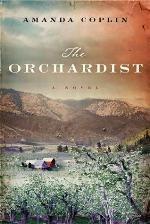 Enid Shomer, The Twelve Rooms of the Nile. I reviewed this for Booklist; it's an exquisitely written intellectual adventure about Florence Nightingale, Gustave Flaubert, and what might have happened had they met while journeying down the Nile separately in 1850.
Enid Shomer, The Twelve Rooms of the Nile. I reviewed this for Booklist; it's an exquisitely written intellectual adventure about Florence Nightingale, Gustave Flaubert, and what might have happened had they met while journeying down the Nile separately in 1850.
Amanda Coplin, The Orchardist. Set at the turn of the 20th century on a large orchard in central Washington State, "Coplin’s mesmerizing debut stands out with its depictions of uniquely Western personalities and a stark, gorgeously realized landscape that will settle deeply into readers’ bones" (quoting from my Booklist review).
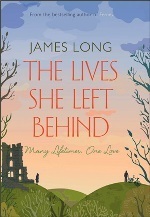 Selden Edwards' The Lost Prince, which I also covered for Booklist. The entire review isn't online, but it's a very worthy sequel to his excellent, time-bending The Little Book. From my review: "Moving from America’s Gilded Age through WWI’s aftermath in Europe, Edwards’ delightfully imaginative second novel follows a courageous woman’s singular accomplishments and their far-reaching effects on history."
Selden Edwards' The Lost Prince, which I also covered for Booklist. The entire review isn't online, but it's a very worthy sequel to his excellent, time-bending The Little Book. From my review: "Moving from America’s Gilded Age through WWI’s aftermath in Europe, Edwards’ delightfully imaginative second novel follows a courageous woman’s singular accomplishments and their far-reaching effects on history."
James Long, The Lives She Left Behind. If you read and loved Ferney but haven't picked up the sequel yet, what are you waiting for? It continues the story of Gally, Ferney, and Mike some 16 years later, answering the question posed by the final, devastating line of the first book (the title is apropos). I won't say more than that, other than I felt badly for Mike, finding himself enmeshed once again in the same painful triangle, but it's a very satisfying read.
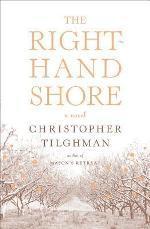 Christopher Tilghman's The Right-Hand Shore. In 1920, a prospective heir to Mason's Retreat, a once-prosperous Maryland estate, learns about his distant relatives, the Masons and Baylys, and their complex relationship with the land and the black families who lived and worked alongside them over the previous 60 years. Beautiful and elegiac, it addresses the perennial topic of race relations in American history but is not your typical plantation novel. You don't need to have read Mason's Retreat first (this is a prequel)—I hadn't—but it's on my list now.
Christopher Tilghman's The Right-Hand Shore. In 1920, a prospective heir to Mason's Retreat, a once-prosperous Maryland estate, learns about his distant relatives, the Masons and Baylys, and their complex relationship with the land and the black families who lived and worked alongside them over the previous 60 years. Beautiful and elegiac, it addresses the perennial topic of race relations in American history but is not your typical plantation novel. You don't need to have read Mason's Retreat first (this is a prequel)—I hadn't—but it's on my list now.
What's up for next year? Well, I've nearly made it through the to-be-reviewed pile, at last, but plan to approach the next year somewhat differently... reviewing more of my own books and making more requests from publishers myself. I also hope to diversify my selections even more, reviewing more books set outside Europe and America, and from non-Western writers. These books are rarely offered up for review, so I expect to make up for it with my own purchases/requests or library copies. I have the 12 titles from the TBR Challenge to look forward to, and I'm also debating doing something for Small Press Month in March, maybe focusing on reviews of small press titles.
What books are you looking forward to the most in 2013? If you need ideas, check out the Historical Novel Society's forthcoming books list, newly updated through next fall (compiled by me and Sarah Cuthbertson).
Thanks for following this blog and reading along with me over the last year! I wish you the very best for 2013, with lots of good reading ahead.
I've been tracking my books on Goodreads (please follow or friend me there if you'd like!) and had set myself a goal of 85 books for 2012. Until this recent holiday break, I wasn't sure if I'd make it, but a last-minute reading sprint put me over the top at 89. With the library closed over most of the last two weeks, I haven't done much aside from read, proofread (the Historical Novels Review's Feb reviews are due soon), eat, sleep, and write. With some shopping and one very slow day at the reference desk mixed in. I wrote up four reviews for HNR, mostly of UK titles I'd bought and which the publishers didn't send, and will be reprinting them here after they're published in February. It's been nice... I don't usually have this much time available at a single stretch.
During the last year, I completed the Chunkster Challenge with many titles to spare - at least a dozen in all. Although I don't plan to sign up again next year (I want to give myself a break!) I thoroughly enjoyed participating and am pretty amazed I managed to get so many 450-plus page books read.
I've also gone back and forth about activating/deactivating the captcha for blog comments. Personally I think it's a pain, but I turned it off for a time and was getting dozens of spam comments a day. It was too much, so I added it back (sorry; I hope people will still comment anyway).
Instead of publishing a Top 10 (or Top 17 or whatever) list, I thought I'd mention some novels I read in 2012 and didn't end up reviewing here, but which I'd highly recommend:
 Enid Shomer, The Twelve Rooms of the Nile. I reviewed this for Booklist; it's an exquisitely written intellectual adventure about Florence Nightingale, Gustave Flaubert, and what might have happened had they met while journeying down the Nile separately in 1850.
Enid Shomer, The Twelve Rooms of the Nile. I reviewed this for Booklist; it's an exquisitely written intellectual adventure about Florence Nightingale, Gustave Flaubert, and what might have happened had they met while journeying down the Nile separately in 1850.Amanda Coplin, The Orchardist. Set at the turn of the 20th century on a large orchard in central Washington State, "Coplin’s mesmerizing debut stands out with its depictions of uniquely Western personalities and a stark, gorgeously realized landscape that will settle deeply into readers’ bones" (quoting from my Booklist review).
 Selden Edwards' The Lost Prince, which I also covered for Booklist. The entire review isn't online, but it's a very worthy sequel to his excellent, time-bending The Little Book. From my review: "Moving from America’s Gilded Age through WWI’s aftermath in Europe, Edwards’ delightfully imaginative second novel follows a courageous woman’s singular accomplishments and their far-reaching effects on history."
Selden Edwards' The Lost Prince, which I also covered for Booklist. The entire review isn't online, but it's a very worthy sequel to his excellent, time-bending The Little Book. From my review: "Moving from America’s Gilded Age through WWI’s aftermath in Europe, Edwards’ delightfully imaginative second novel follows a courageous woman’s singular accomplishments and their far-reaching effects on history."James Long, The Lives She Left Behind. If you read and loved Ferney but haven't picked up the sequel yet, what are you waiting for? It continues the story of Gally, Ferney, and Mike some 16 years later, answering the question posed by the final, devastating line of the first book (the title is apropos). I won't say more than that, other than I felt badly for Mike, finding himself enmeshed once again in the same painful triangle, but it's a very satisfying read.
 Christopher Tilghman's The Right-Hand Shore. In 1920, a prospective heir to Mason's Retreat, a once-prosperous Maryland estate, learns about his distant relatives, the Masons and Baylys, and their complex relationship with the land and the black families who lived and worked alongside them over the previous 60 years. Beautiful and elegiac, it addresses the perennial topic of race relations in American history but is not your typical plantation novel. You don't need to have read Mason's Retreat first (this is a prequel)—I hadn't—but it's on my list now.
Christopher Tilghman's The Right-Hand Shore. In 1920, a prospective heir to Mason's Retreat, a once-prosperous Maryland estate, learns about his distant relatives, the Masons and Baylys, and their complex relationship with the land and the black families who lived and worked alongside them over the previous 60 years. Beautiful and elegiac, it addresses the perennial topic of race relations in American history but is not your typical plantation novel. You don't need to have read Mason's Retreat first (this is a prequel)—I hadn't—but it's on my list now.What's up for next year? Well, I've nearly made it through the to-be-reviewed pile, at last, but plan to approach the next year somewhat differently... reviewing more of my own books and making more requests from publishers myself. I also hope to diversify my selections even more, reviewing more books set outside Europe and America, and from non-Western writers. These books are rarely offered up for review, so I expect to make up for it with my own purchases/requests or library copies. I have the 12 titles from the TBR Challenge to look forward to, and I'm also debating doing something for Small Press Month in March, maybe focusing on reviews of small press titles.
What books are you looking forward to the most in 2013? If you need ideas, check out the Historical Novel Society's forthcoming books list, newly updated through next fall (compiled by me and Sarah Cuthbertson).
Thanks for following this blog and reading along with me over the last year! I wish you the very best for 2013, with lots of good reading ahead.
Published on December 31, 2012 07:58



